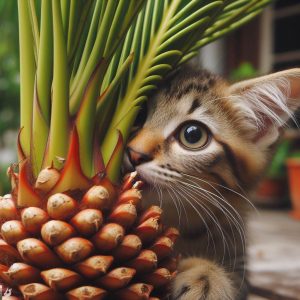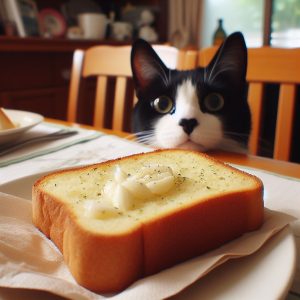Have you ever wondered if it’s actually safe for people to eat cat food? With rising food costs, some folks consider feeding their family cat food instead of pricey human groceries.
But is eating Whiskas and Meow Mix nutritious or even edible for humans? Let’s dig into the facts.
The short answer: While cat food won’t kill you if eaten occasionally, it lacks recommended nutrients for people and often contains additives that may cause health issues. Overall, human food is far better and safer.
Is Cat Food Toxic to Humans?
First, the good news. Cat food itself is not toxic or poisonous to human bodies in small amounts.
Both cat and human food must meet safety standards before being sold. So ingesting a bite or two likely won’t harm you.
However, regularly eating cat food instead of human food can lead to malnutrition and other health problems in people. Here’s why:
Cat Food Nutrition is Incomplete for Humans
Cat food is specially formulated to meet feline nutritional needs. But cats and humans have different requirements.
For example, cats need much higher levels of protein —around 26% of their total diet—than humans. They also require more amino acids like taurine, arginine, and methionine.
Conversely, cat food is often deficient in nutrients people need for good health, like:
- Vitamin C
- Calcium
- Iron
- Potassium
- Folate
It also contains just a fraction of fiber compared to recommended daily intake for humans.
Over time, these nutritional deficiencies can cause health issues ranging from:
- Weakened immune system
- Anemia
- Impaired brain function
- Bone loss
- Heart problems
- Birth defects
Questionable Additives in Cat Food
In addition to nutritional gaps, mass market cat foods often contain additives potentially unsafe for long-term human consumption. Examples include:
- Artificial colors & flavors – Associated with allergies, ADHD, and cancer in people when consumed regularly. Not evaluated as safe for humans by FDA.
- Palatability enhancers – Cat food contains additives like animal digest and meat byproducts to enhance taste, aroma, and appeal. Safety unknown in human-level quantities.
- Fillers – Cheaper cat foods use fillers like corn, wheat, soy, etc. These provide calories but little nutritional value to humans. Some cause allergies.
- Sweeteners – Some brands add sugars or artificial sweeteners that may encourage obesity, diabetes, and other problems in people.
- Preservatives – Cat food preservatives like BHA, BHT, ethoxyquin are linked to cancer, organ damage, and birth defects in studies on rats. Unsure effects in humans.
So while an occasional bite of kibble won’t kill you, regularly eating pet food could potentially expose people to substances and amounts of additives shown to be harmful in scientific research. Long term safety for humans is simply unknown.
What Does Cat Food Taste Like to Humans?
Okay, so clearly cat food isn’t ideal nutrition for people. But maybe you’re still wondering what it tastes like if you try it.
Most cat owners have snuck at least one bite of kitty kibble or canned food out of curiosity. Here’s a summary of what to expect:
Dry Cat Food
- Texture – Dry, crunchy kibble has a firm, baked texture similar to nutty cereal or crackers. Size and shapes vary by brand.
- Taste – Savory, moderately salty flavor profile. The meaty taste (usually chicken or fish based) is enhanced by sprayed-on fats, flavorings and palatability boosters.
- Smell – Strong, appetizing aromas like roasted chicken or grilled fish. Created by flavor additives.
- Experience – Highly processed kibble has an ultracrunchy mouthfeel and dissolves into gritty bits. Flavors start strong then turn chalky with a bitter chemical aftertaste.
Canned/Wet Cat Food
- Texture – Smooth, mushy, sauce-like consistency. Similar to canned meat spreads for humans.
- Taste – Savory gravy flavors dominated by salty, fatty meaty notes. Often fishy or chicken broth-like taste.
- Smell – Intense meaty or fish aromas. Ranges from wet dog food odors to more appealing roasted meat smells depending on brand quality.
- Experience – Rich, fatty mouthcoating texture. Concentrated umami meatiness turning into chemical aftertaste similar to kibble. Some varieties are extra pungent and fishy.
Overall Verdict
While pet food creators try hard to make cat food smell and taste enticing, the flavors tend to be overpowering and unpleasant to the human palate after a few bites.
Texture is often unappealing. The strong artificial aromas created by additives also make cat food less appetizing for people over time as your senses acclimate.
Health Risks of Eating Cat Food Regularly
We’ve established cat food generally isn’t delicious or nutritious for humans. But what are the actual health effects if you did choose to eat Whiskas or Friskies regularly?
Consuming cat food long term could increase your risk for the following issues:
Malnutrition
Even high-quality cat foods don’t contain balanced nutrition for people. Eating cat food instead of healthful human fare means vital nutrients will be missing from your diet over time.
Deficiencies in protein, carbs, vitamins, minerals and healthy fats will gradually take a toll on your health and energy levels.
Weight Gain
Many mass-market cat foods contain high amounts of fats, sugars, and fillers like corn or wheat that provide empty calories.
In particular, dry cat food is extremely dense at around 400-500 calories per cup. Eating it regularly could lead to obesity.
Diabetes
Related to weight gain, high amounts of carbohydrates, artificial flavors, sugars and fillers mean cat food is a very high glycemic food.
Frequently consuming it puts you at greater risk for insulin resistance, high blood sugar and eventually type 2 diabetes.
Digestive Issues
The heavy protein, high-fat, starchy composition of cat food is hard for the human gut to process long-term.
Eating primarily cat food can create chronic issues like:
- Constipation
- Diarrhea
- Bloating
- Cramping
- Gas
- Heartburn
Heart Disease
Regularly eating cat food high in fat and sodium boosts your risk for high cholesterol, hypertension, atherosclerosis and heart attack.
Allergies
Many mass market cat food brands use cheap fillers and additives like corn, wheat, soy, and preservatives that commonly cause allergic reactions in people.
You may develop skin conditions, sinus troubles, or breathing issues over time.
Behavioral Changes
Artificial colors, flavors, sweeteners and unknown additives in low quality cat foods could potentially affect focus, mood, and brain function in humans, especially children.
Some preservatives like BHT and BHA are even linked tentatively to hyperactivity and anxiety.
Cancer
Eating lots of heavily processed food with questionable additives may raise your cancer risk according to some associative studies.
Certain preservatives allowed in pet food like ethoxyquin are linked to organ damage and cancer in research animals.
Toxicity
Eating primarily cat food could potentially expose you to higher levels of some additives that may be toxic in large amounts like propylene glycol, BHT, BHA, etc. Effects are largely unknown.
As you can see, regularly eating cat food instead of real human food comes with substantial risks spanning malnutrition to diabetes and beyond.
While an occasional bite of kibble won’t immediately make you sick, cat food cannot substitute for a balanced human diet.
Can You Live off Cat Food Alone?
Based on its nutritional makeup and health risks, could cat food alone realistically sustain human life over months or years?
The answer is no—living entirely off cat food is not feasible or safe long term.
Here’s why experts warn against trying to survive solely on pet food:
- Nutritional deficiency – Lacking key macronutrients, vitamins and minerals. Would lead to symptoms like anemia, scurvy, weakness, confusion, bone loss, and low immunity against infection and disease.
- High toxicity risk – Cumulative effect of consuming higher amounts of questionable additives not shown to be safe in humans long term. Ethoxyquin particularly concerning.
- Digestive disability – Cat food texture and composition would severely compromise ability to digest and absorb nutrients. Could cause intestinal damage.
- Rapid weight loss – Calories from carb and fat-heavy cat food not absorbed well. Muscle and fat wasting inevitable without human protein sources.
- Illness vulnerability – Without a balanced diet, the body loses resilience against viruses, gut infections, parasites, and chronic disease. Significant infection and illness probability.
- Failure to thrive – Inability to thrive both physically and mentally. Wasting, weakness, cognitive issues probable even if you technically survived.
- Accelerated mortality – Without a species-appropriate diet, humans cannot achieve typical lifespan. Early death likely.
While you may lose weight rapidly eating only cat food, you would become malnourished, ill and ultimately perish prematurely.
Occasional nibbling won’t kill you, but attempting to live as a true “cat person” on pet food alone could be fatal. Good nutrition matters.
Healthy & Affordable Human Food Alternatives
Instead of resorting to Whiskas for dinner, here are some budget-friendly ways to enjoy nutritious real food:
Buy Generics
Opt for cheaper generic brands of common grocery staples like rice, beans, oats, eggs, canned tuna, frozen vegetables, etc.
Prioritize healthy basics over pricy processed items.
Shop Sales & Bulk
Buy shelf-stable items on sale in bulk for lower unit prices. Stock up on things like:
- Canned beans
- Rice
- Peanut butter
- Pasta
- Oats
- Canned tomatoes
Discount Stores
Shop at warehouse stores like Costco or discount grocers like Aldi for significant grocery savings.
Generic Brands
Choose the generic or store brand version of items like cereal, spices, canned goods, granola bars, bread, etc. to pay less.
Store Loyalty Programs
Join loyalty programs at stores where you regularly shop to earn discounts on future purchases.
Buy Produce in Season
Pick up fresh fruits and veggies that are currently in season for the lowest prices. Freeze any extra.
Cook From Scratch
Prepare simple meals at home instead of buying pricey packaged items. Soups, eggs, rice bowls, sandwiches, baked potatoes etc. can all be very inexpensive.
Meal Prep
Save time and money by cooking a batch of food like chili or casseroles on your day off to reheat for quick meals all week.
Substitute Costly Ingredients
Swap pricier meats for budget-friendly protein like eggs, canned tuna, beans, and lentils in favorite dishes.
With a little planning, creativity and clever substitution, you can eat nutritious real-food meals on a tight budget that taste far better than cat food!
The Bottom Line: Choose Human Food for Human Health
While cat food itself won’t immediately poison someone, regularly eating it instead of balanced human fare can have detrimental effects over time.
Because pet food is designed for a different species, it simply lacks the complete nutrition people need for optimal wellness.
Potential additives and toxins also make cat food a risky staple food. Trying to survive solely on cat food could literally be fatal.
With some effort, affordable nutritious options are available for the savvy shopper. Prioritizing health now means enjoying an active life long term.
So next time costs rise at the supermarket, remember:
Real food nourishes. Cat food merely feeds.
Choose wisely for your body.


